Search
Summary 
Loading AI-generated summary based on World History Encyclopedia articles ...
Search Results
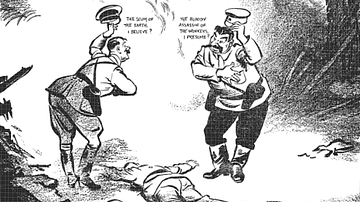
Definition
Nazi-Soviet Pact
The Nazi-Soviet Pact, also called the Molotov-Ribbentrop Pact after the respective foreign ministers of the USSR and Germany, was a non-aggression agreement signed in August 1939. The pact allowed the leader of Nazi Germany Adolf Hitler (1889-1945...

Definition
Operation Barbarossa
Adolf Hitler (1889-1945), leader of Nazi Germany, attacked the USSR on 22 June 1941 with the largest army ever assembled. The Axis offensive of June-December 1941 was code-named Operation Barbarossa ('Redbeard') after Frederick Barbarossa...
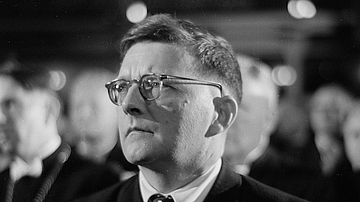
Definition
Dmitri Shostakovich
Dmitri Shostakovich (1906-1975) was a Russian composer of operas, ballets, concertos, string quartets, and 15 symphonies. Shostakovich was frequently denounced by the repressive Soviet state, but in some periods, he also gained official favour...

Video
Why Hitler Invaded the Soviet Union
Sign up to World of Warships with our link for a free starter pack worth €25: https://wo.ws/3YW2PoX In the summer of 1941 Adolf Hitler launched Operation Barbarossa, his invasion of the Soviet Union. Often described as an epic strategic...

Definition
Webster-Hayne Debate
The Webster-Hayne debate was a series of back-and-forth speeches between Senator Daniel Webster of Massachusetts and Senator Robert Y. Hayne of South Carolina in January 1830. What started as a debate over the sale of western lands blossomed...

Article
Siege of Leningrad
The siege of Leningrad (Saint Petersburg) began during Operation Barbarossa, the invasion of the USSR launched by the leader of Nazi Germany, Adolf Hitler (1889-1945), during the Second World War (1939-45). The siege or blockade lasted from...
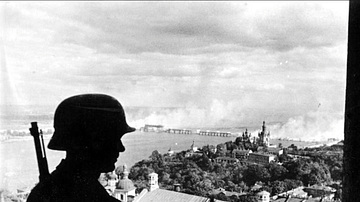
Article
Battle of Kiev in 1941
The Battle of Kiev (Kyiv) in July-September 1941 was a major Axis victory in Operation Barbarossa, Adolf Hitler's attack on the USSR during the Second World War (1939-45). Hitler wanted the resources of Ukraine since these would allow the...

Article
Siege of Sevastopol in 1941-2
The siege of Sevastopol (Oct 41 to Jul 42) was an attack by Axis forces on the base of the USSR's Black Sea Fleet during Operation Barbarossa of the Second World War (1939-45). Sevastopol (aka Sebastopol) had one of the world's strongest...
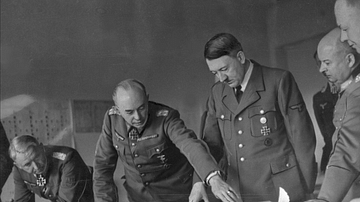
Article
Why Did Hitler Attack the USSR?
Adolf Hitler (1889-1945), the leader of Nazi Germany, was intent on attacking the USSR in the summer of 1941. With Western Europe subdued in 1940, Hitler could finally pursue his dream of territorial expansion in the East, destroy Bolshevism...
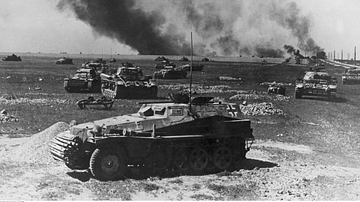
Article
Battle of Białystok-Minsk
The Battle of Białystok-Minsk in Jun-Jul 1941, which involved the encirclement of entire Soviet armies positioned near each city in Poland and Belarus, respectively, was one of the first victories by Nazi Germany and its Axis allies against...